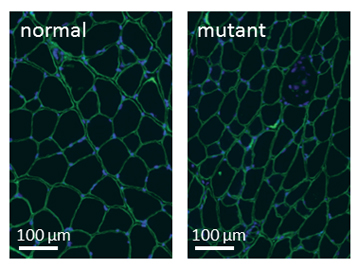Retroviruses carry proteins on their surface that are able to mediate fusion of their envelope with the membrane of a target cell. Once released inside that cell, their genetic material becomes integrated in the host’s chromosomes. In the rare cases where the infected cell is involved in reproduction, the viral genes may be transmitted to progeny. Thus nearly 8% of the mammalian genome is made up of vestiges of retroviruses, or «endogenous» retroviruses. Most of them are inactive, but some remain capable of producing proteins: this is the case of syncytins, proteins that are present in all mammals and encoded by genes inherited from retroviruses «captured» by their ancestors. A little more than five years ago, and thanks to inactivation of these genes in mice, the team led by Thierry Heidmann3 demonstrated that syncytins contribute to formation of the placenta. Because of their ancestral ability to mediate
Using the same mice, the team has revealed a «collateral» and unexpected effect of these proteins: they endow males with more muscle mass than females! Like the syncytiotrophoblast, muscle mass develops from fused stem cells. In the
If this discovery were to be confirmed in other mammals, it might account for the muscle dimorphism observed between males and females, a difference that is not seen so systematically in egg laying animals. By cultivating muscle stem cells from different mammalian species (mouse, sheep, dog, human), the scientists have advanced some way along the path: they indeed showed that syncytins contributed to the formation of muscle fibers in all the species tested. It is now necessary to demonstrate whether, in these species as well, the action of syncytins is also



